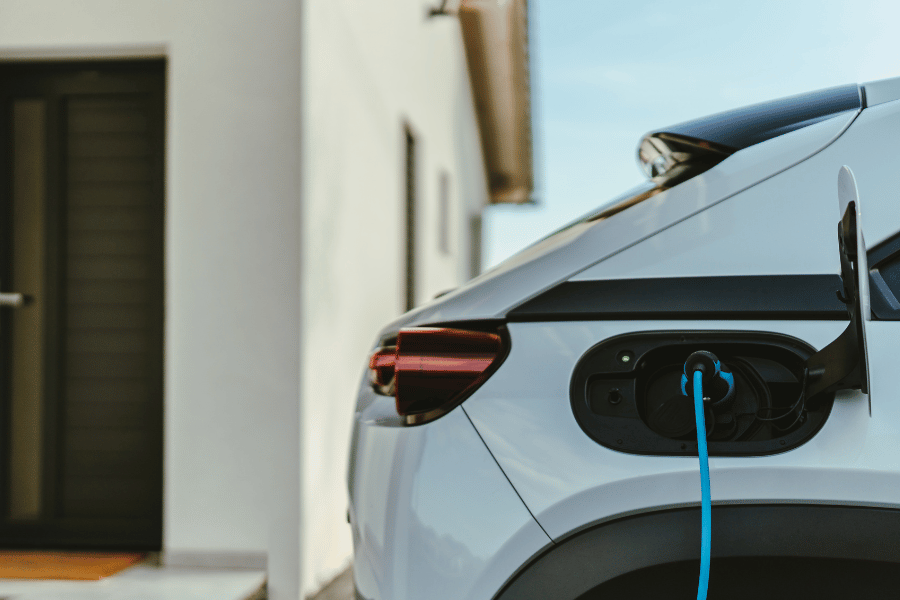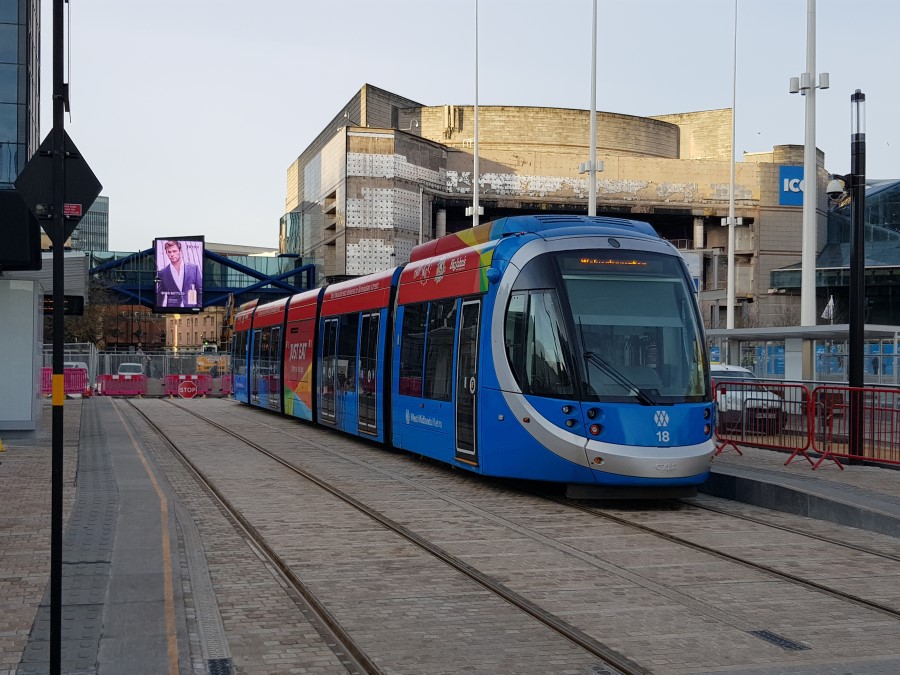Paige Davies discusses the measures the Midlands is taking to reach net zero.
Paige worked as an intern at City-REDI over the summer of 2023. She graduated with a BSc in Geography and is currently undertaking a Masters in Environment, Development, and Politics at the University of Birmingham.
As part of the UK’s net zero by 2050 goal, the Midlands is taking measures to reach this, implementing their own ambitious net zero aims for 2041 (WMCA, 2019). This blog focuses on sustainable transport in the Midlands including the promotion of active transport and enhancing cycling infrastructure, increasing and decarbonising public transport, implementing low-emission zones and creating safer roads. This supports the Midlands in reaching its net zero goal and has other benefits in relation to better health and new job creation.
Active Transport
Active transport utilises walking and cycling to get to destinations, reducing the number of vehicles on the road, lowering emissions, and improving health. Journeys by modes of active travel in the Midlands are low compared to the rest of the UK, both daily and weekly (Transport for West Midlands).
Since 2020, cycling in the West Midlands has increased by 63% (Department for Transport, 2021), no doubt partly due to the 342 miles of cycling network across the West Midlands (COLAS). However, the greatest barrier to increasing cycling is safety concerns (Transport for West Midlands, 2019). In recognition, the West Midlands Combined Authority has partnered with Cycle Crime Action Plan to issue bike locks and the marking up of bikes to get people to invest in cycling. Further investments in barriers from roadside traffic and a lack of storage infrastructure must be addressed to encourage cycling. The West Midlands Cycle Hire established in 2021 has seen over 200,000 journeys so far (WMCA, 2022), with added production benefits, supporting local businesses and the economy.
Between 2020-2021, 45% of residents in the West Midlands walked 5 times per week (Transport for West Midlands, 2021), with 60% of homes in the West Midlands qualifying to become 20-minute neighbourhoods (Transport for West Midlands, 2021). The idea of 20-minute neighbourhoods is that shops, schools, and doctors are within 20 walking minutes, promoting walking as the local area becomes more accessible (Transport for West Midlands, 2023). Low-traffic neighbourhoods are being trialled across Birmingham, in Kings Heath and Moseley, to increase socialisation and safety (Birmingham City Council, 2023). Walking infrastructure requires improvement, with greenery making areas nicer to be in, and promoting pride in areas, which helps to combat antisocial and criminal behaviour (WMCA, 2020). Pedestrianisation will bring positive economic effects, with Coventry and Bristol seeing £1.4million benefits to the high street from a 25% increase in footfall in 2007 (Living Streets, 2018). Active transport also increases public transport use, suggesting infrastructure investment will be utilised. This will be cost-effective as the cost to maintain pedestrian and cycling facilities is lower than road maintenance.
Public Transport
Active transport will see a predicted increase in public transport use by 27% by 2041 (WMCA, 2021). Wider net zero plans focus on the implementation of 300 zero-emission buses (WMCA, 2023), trialled in Coventry with the installation of 50 hydrogen cell buses on the road, in a bid to become the UK’s first all-electric city (Coventry City Council, 2022). Hydrogen bus use is boosted by the Zero-Emission Bus Regional Areas fund (ZEBRA), promoting cleaner and greener bus transport and the Bus Service Improvement Plan (BSIP), seeing £88 million in a passenger incentive programme to increase passenger use of bus travel (Transport for West Midlands, 2022). The Future Transport Zone programme also sets out to understand populations’ transport behaviours, highlighting areas in the Midlands using the bus network the most as a starting point for targeting decarbonisation works (Transport for West Midlands, 2023).
Alongside this, railways are aiming to be decarbonised by 2050, with plans to remove all diesel trains by 2040 (Parliament. House of Commons, 2021). A £1.5m investment from the Midlands Engine Investment Fund has been granted to Vivarail, a Midlands company specialising in electric and battery-powered train systems (CWLEP, 2020). Infrastructure upgrades are necessary to increase rail use and hold additional passenger capacity.
Low Emission Zones
The implementation of an Ultra Low Emission Zone has been seen in London, predicted to save the NHS £5 billion by 2050 by preventing 500,000 new cases of air quality-related diseases over 30 years (Cepeda Zorrilla, 2023). Low Emission Zones (LEZ) have many benefits, such as combating climate change through reduced greenhouse gases and reducing air pollutants such as N02 and PM2.5, the main causes of asthma and lung function complaints. These zones fine cars emitting pollutants, encouraging the shift towards electric cars to reach net zero. The current LEZ in Birmingham has seen a 13% reduction in N02, and a 50% decrease in high-polluting vehicles entering the city between 2021-2022 (Birmingham City Council, 2022). Proposals for LEZs in Leicester and Nottingham have been suggested, although air quality has drastically improved from the hydrogenation of bus fleets (Nottingham City Council, 2018). However, asking the public to switch to lower-polluting vehicles creates socioeconomic inequalities, as many cannot afford to invest in sustainable transport (Cepeda Zorrilla, 2023). The implementation of these LEZ’s will depend on the existing public transport infrastructure and the availability and affordability of low-emission vehicles. Therefore, given the current crisis, LEZs should be utilised in conjunction with other sustainable transport policies to reduce the risk of heightened inequalities.

Health Impacts
An indirect impact of sustainable transport is the positive health impacts, reducing pressure on the NHS, which has faced huge backlogs since the onset of COVID-19. Currently, inactivity costs the NHS £1 billion, with indirect costs of £8.2 billion (Soni and Soni, 2016). Physical activity will increase in the Midlands as active transport increases, seeing physical and mental health benefits. To support the inclusion of people with mobility issues, a bid was submitted to Sport England to fund accessible cycling opportunities for all, with hopes to establish a Wheels for All centre in each local authority (WMCA). This suggests active transport should be promoted to achieve net zero goals and improve the health of people living in the Midlands.
The Midlands has ambitious plans to promote sustainable transport and reach UK net zero goals. Despite this, greater efforts need to be made to match other leading regions and cities, including the promotion of pre-existing infrastructure, such as canal pathways for active transport. Consideration should be directed towards the feasibility of upgrading automobiles to manage socioeconomic inequalities, highlighting the importance of providing a strong and reliable public transport network. Plans to promote sustainable transport dominate in the West Midlands, with a need to look at how the East Midlands can support the wider region in its transition to net zero. To promote a coherent sustainable transport movement, policies should be used in conjunction with each other for maximum benefit. This blog focuses on work in urban areas with further research needed to understand what the future of sustainable transport might mean for rural areas.
This blog was written by Paige Davies, City-REDI Summer Intern, City-REDI / WMREDI, University of Birmingham.
Disclaimer:
The views expressed in this analysis post are those of the authors and not necessarily those of City-REDI or the University of Birmingham.


